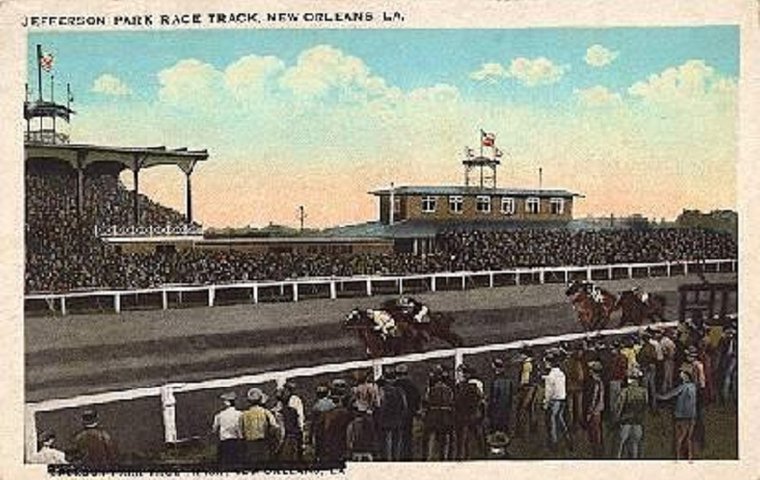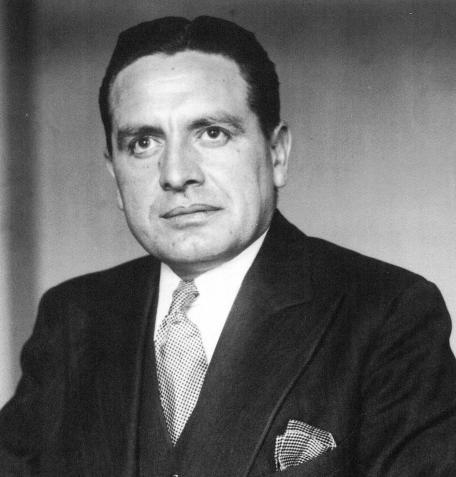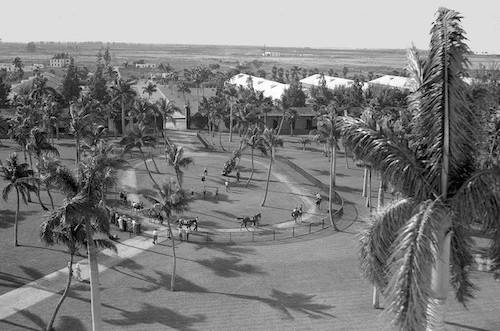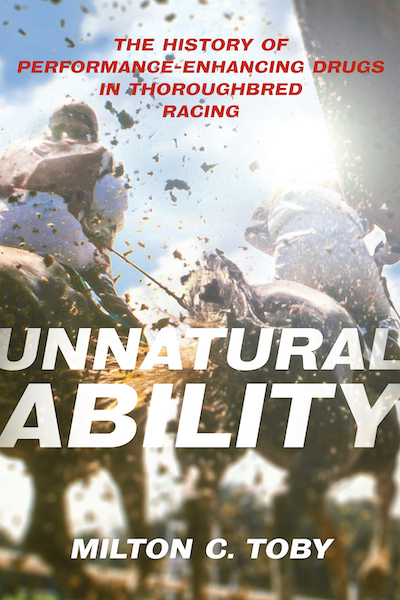
In an extract from his new book, Unnatural Ability – the History of Performance-Enhancing Drugs in Thoroughbred Racing, award-winning author Milt Toby reveals how Harry J. Anslinger, the first commissioner of the Federal Bureau of Narcotics, targeted the sport in the 1930s
Considering the chaos surrounding racing these days, readers may question the timeliness of a book excerpt looking back to the 1930s. It's a fair question. When agents from the new Federal Bureau of Narcotics raided the backstretch of Arlington Park in 1933, two things became obvious: first, without testing to back up rules against performance-enhancing drugs, the same stimulants and pain killers used to boost horses in 1890 were still popular 40 years later. The second was that a half-hearted federal effort by the Feds to regulate racing was doomed. It would take almost 90 years for the idea to resurrected.
Campaign targeting illegal drugs on racetracks
A short entry on Anslinger’s resumé, seldom remembered today and generally ignored or glossed over by his biographers, was a short-lived campaign aggressively targeting the possession and distribution of illegal drugs at East Coast and midwestern racetracks during the early 1930s.
 The Federal Bureau of Narcotics had no jurisdiction to actually clean up racing, despite the press crediting Anslinger’s efforts to do so, because doping horses was not a federal offense. Nevertheless, Anslinger garnered a tremendous amount of favorable publicity by associating his racetrack investigation with the humane treatment of horses.
The Federal Bureau of Narcotics had no jurisdiction to actually clean up racing, despite the press crediting Anslinger’s efforts to do so, because doping horses was not a federal offense. Nevertheless, Anslinger garnered a tremendous amount of favorable publicity by associating his racetrack investigation with the humane treatment of horses.
The investigation spanned more than two years, starting early in 1932 and still active during the first months of 1934. During that period, agents from the Federal Bureau of Narcotics followed the Thoroughbred racing circuit, looping from Louisiana to Florida to Maryland in the winter and spring; heading up to Illinois and Ohio in the summer; then making stops in Michigan, Maryland, Kentucky, and New York before returning to Louisiana in the fall.
The agents conducted hundreds of undercover investigations on the backstretches of at least 15 racetracks in eight states. This was a significant commitment of men and resources for the bureau, which in the early 1930s averaged between 200 and 220 field agents and an annual budget of less than $1.5 million.
One more chance to clean up sport
Although the racetrack sweep generated favorable publicity for Anslinger and the bureau, the investigations had minimal effect on doping. Anslinger admitted as much in 1936 when he told state racing commissioners that they had one more chance to clean up the sport.
If not, Anslinger said, he was prepared to introduce legislation drafted by the Treasury Department that would ban the interstate shipment of horses with undefined “bad records for the use of narcotics.”
It was not the first time he had criticized state racing commissions for their inaction on doping, and it would not be the last. But federal intervention never happened, and doping continued.
The scope of the Federal Bureau of Narcotics investigation is summarized in documents among Anslinger’s papers archived at the Pennsylvania State University Library. Though not comprehensive, the summaries provide substantial overviews of the doping problem from 1932 through 1934 in several related areas: horses, owners, racetracks, and dates associated with reported incidents of doping; violators implicated in doping incidents; and individuals indicted for drug offenses.
Anslinger’s papers also include a lengthy formulary of doping prescriptions in use at the time. The prescriptions were collected by federal agents during the investigation, and they indicate that dopers were still using many of the drugs first introduced to the sport by Doc Ring and his contemporaries in the 1890s.
Cocaine, heroin and morphine
Change was coming in human athletics and horse racing, but cocaine, heroin, and morphine continued to be the main performance-enhancing drugs in use at the nation’s racetracks during the 1930s.
Anslinger told the House Appropriations Subcommittee that his agents had observed 1,200 horses and found that 300 – 25 per cent – had been “doctored” before a race.
The summary in Anslinger’s papers identifies 348 separate incidents of suspected doping during the relevant period (29% of the horses reportedly observed) involving 254 individual horses (21%). Four of those horses were named in five separate doping incidents; four others were named in four separate incidents each. Of the 254 identified horses, 56 were implicated in more than one doping incident.
 Nearly one-third of alleged doping incidents reported by the Federal Bureau of Narcotics from late 1932 through early 1934 – 104 of 348 reports – occurred at Jefferson Park in New Orleans.
Nearly one-third of alleged doping incidents reported by the Federal Bureau of Narcotics from late 1932 through early 1934 – 104 of 348 reports – occurred at Jefferson Park in New Orleans.
Ironically, in December 1931 Jefferson Park stewards T. C. Bradley and John T. Ireland had issued a stern warning to owners and trainers that anyone caught with illegal narcotics or liquor (Prohibition would not be repealed for another two years) would be prosecuted.
Bradley and Ireland also gave notice that horsemen would be responsible for drug and liquor violations by their employees.
The warning had little effect, and two years later, it was repeated. A statement from the stewards warned owners and trainers that the track veterinarian, Dr. Hamlet Moore, would “exercise the closest possible scrutiny in detecting any mispractice and to report any such findings to the stewards, as well as the government officials.”
The goal, the stewards added, was “to give the government all the aid possible toward stamping out the practice of doping horses.”
After Jefferson Park, the racetracks with the most suspicious incidents of possible doping were Arlington Park (64), Hialeah (32), Detroit Fair Grounds (29), and Lincoln Fields in Illinois (22). The statistics showed a lack of either ability or interest (maybe both) on the part of track owners and racing officials to control doping and added credence to Anslinger’s worries that racing could not police itself.
One doped horse out of every four does not necessarily indicate a general acceptance of performance-enhancing drugs in horse racing, as Anslinger, Thomas Cromwell, and others claimed. Still, it was an astonishing number.
The horses on the list were a generally nondescript lot. One name stood out, however: W. S. Kilmer’s Herowin, a homophone for the potent drug often found in doping prescriptions.
Several prominent owners
Whether the name was intentionally ironic or an accidental coincidence that slipped past the Jockey Club is lost to history. Anslinger’s summaries named several prominent owners, including Audley Farm, E. R. Bradley, Hal Price Headley, Greentree, Coldstream Stud, Jack Howard, C. V. Whitney, and Brookmeade Stable.
A separate summary identified 74 individuals by case number, name, track, dates of arrest and indictment, and disposition of the case where available. Of the 74 named individuals, 59 were indicted on narcotics charges.
Of those indicted, 44 were convicted and received sentences ranging from 30 days to 15 years; five were fugitives when the list was compiled; and three cases were dismissed (including one because a motion to exclude the prosecution’s evidence was granted).
A third summary named 105 “violators,” including three pharmacies. There are handwritten notations listing 53 convictions (with jail and prison sentences totaling “110 years, 7 months”), 12 cases pending, three cases closed, five dismissed, and seven fugitives. There is substantial duplication of names on the three lists, but each summary also contains information not included on the others.
Significant caveats
There are significant caveats about taking these numbers, names, and allegations at face value. The most important ones involve the sample size (small and possibly statistically insignificant) and the way the lists were compiled.
Anslinger’s undercover agents made the rounds of the Thoroughbred racing circuit for two years, posing as owners, touts, gamblers, and often just interested hangers-on. They generally had complete discretion when it came to deciding which horses to watch and which ones to ignore.
Also, the dispositions of the reported doping incidents – whether there were arrests, indictments, trials, verdicts, dismissals, and so on – are often unknown.
Another problem with the investigation was the narrow geographic scope of the undercover operation. Anslinger’s agents visited more than a dozen racetracks over 14 months, but none of them were west of the Mississippi River. Any sweeping conclusions from the investigation must be tempered by the failure to recognize or address the fact that Thoroughbred racing, and possible doping, was taking place throughout the United States.
A saliva test to detect a few prohibited medications in a horse’s system was not introduced in the United States until 1934 at Hialeah. Although Anslinger would claim much of the credit for bringing the saliva test to America, it did not figure into his investigation. As a result, allegations, indictments, and prosecutions were based primarily on the reports of agents who observed substances being administered to horses before races.
Subsequent chemical testing of the substances themselves, testing of bottles or other containers confiscated from individuals or barns (often without search warrants), and the possession of hypodermic needles and other drug paraphernalia bolstered the agents’ field reports.
Even when couched in the clinical language typical of police files, the investigative reports of Federal Bureau of Narcotics agents tell a sordid story of a sport in serious trouble.
 Unnatural Ability: The History of Performance-Enhancing Drugs in Thoroughbred Racing by Milton C. Toby is published on August 8 by the University Press of Kentucky. Hardback (440pp, $32.95) and Kindle editions can be ordered at the Kentucky Press website and via Amazon and other retailers
Unnatural Ability: The History of Performance-Enhancing Drugs in Thoroughbred Racing by Milton C. Toby is published on August 8 by the University Press of Kentucky. Hardback (440pp, $32.95) and Kindle editions can be ordered at the Kentucky Press website and via Amazon and other retailers
View the latest TRC Global Rankings for horses / jockeys / trainers / sires


